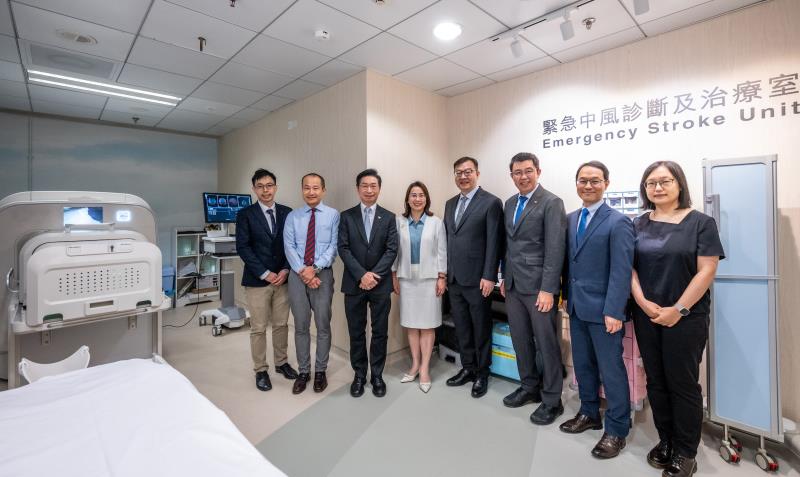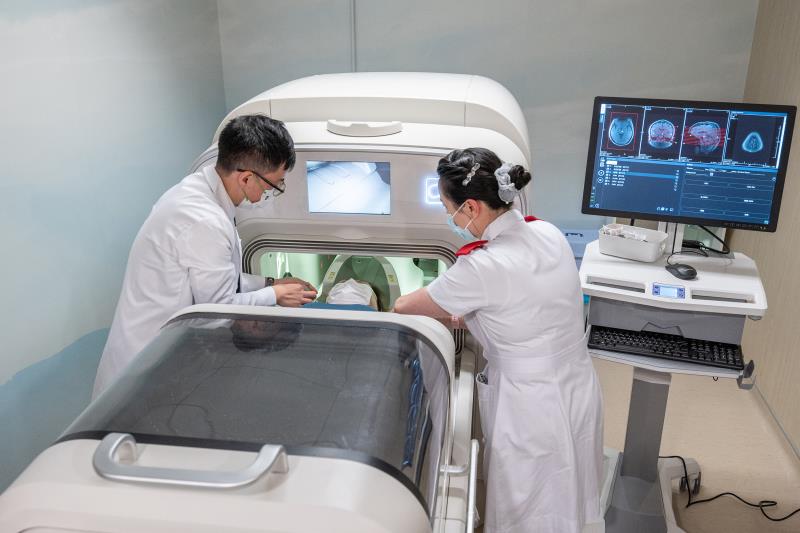Low-field MRI for HK’s first one-stop acute stroke management model




 Dr Sze-Ho Ma, Prof Thomas Leung, Prof Philip Chiu, Prof Xia Meng, Prof Jing Jing, Dr Kin-Lai Chung, Dr Raymond Cheng, Dr Cindy Leng
Dr Sze-Ho Ma, Prof Thomas Leung, Prof Philip Chiu, Prof Xia Meng, Prof Jing Jing, Dr Kin-Lai Chung, Dr Raymond Cheng, Dr Cindy LengLow-field 0.23T MRI technology has been introduced recently as part of the launch of Hong Kong’s first one-stop acute stroke management model, the Emergency Stroke Unit (ESU), at Prince of Wales Hospital (PWH).
Since the launch of the ESU in August 2024, the team from the Chinese University of Hong Kong (CUHK)’s Faculty of Medicine and PWH has performed low-field MRI examinations on more than 20 patients at PWH with promising results. A total of 200 patients will be recruited for an 18-month, nationwide, multicentre, two-phase clinical study on the ESU model in collaboration with the Chinese Stroke Association (CSA) and the Beijing Tiantan Hospital. Results are expected to advance stroke research and facilitate clinical application of the ESU model in Hong Kong. CUHK and PWH are participating in the study as Hong Kong’s first ESU pilot site.
“Integrating this innovative technology into the acute stroke management workflow will potentially transform triage and treatment strategies,” said Dr Kin-Lai Chung, Cluster Chief Executive of New Territories East and Hospital Chief Executive of PWH.
 Preparing a suspected stroke patient for low-field MRI at ESU
Preparing a suspected stroke patient for low-field MRI at ESU
The innovative 0.23T low-field MRI technology allows neurologists to rapidly identify ischaemic and haemorrhagic strokes within 9 minutes and to detect large vessel occlusions, thus enabling immediate clinical evaluation and treatment after imaging and reducing the diagnosis-to-treatment time. It also offers several advantages over standard 1.5T or 3.0T MRI systems, such as greatly enhanced flexibility, lower cost, smaller footprint, improved safety, no special shielding requirements, fewer metal object restrictions, and standard power supply connectivity.
“Based on the experience of stroke centres in mainland China participating in the nationwide multicentre study initiated by the CSA, the ESU model reduced the door-to-needle time to an average of 20 minutes, which is significantly shorter than the international guideline standard of 60 minutes,” noted Professor Xia Meng, Director of the Project Management Department at China National Clinical Research Centre for Neurological Diseases. “By consolidating imaging, clinical evaluation and treatment in a single treatment room equipped with a low-field MRI system, stroke patients can receive more streamlined and expedited care, potentially improving outcomes.”
“With the rapidly ageing population, we anticipate an increasing incidence of acute stroke cases. Timely treatment is crucial for reducing morbidity and mortality. The ESU model can significantly expedite the door-to-needle and door-to-groin puncture time, marking a new milestone in acute stroke treatment that could be a game-changer,” said Professor Thomas Leung, Director and Honorary Consultant of the Acute Stroke Unit at PWH.